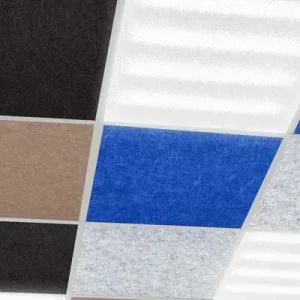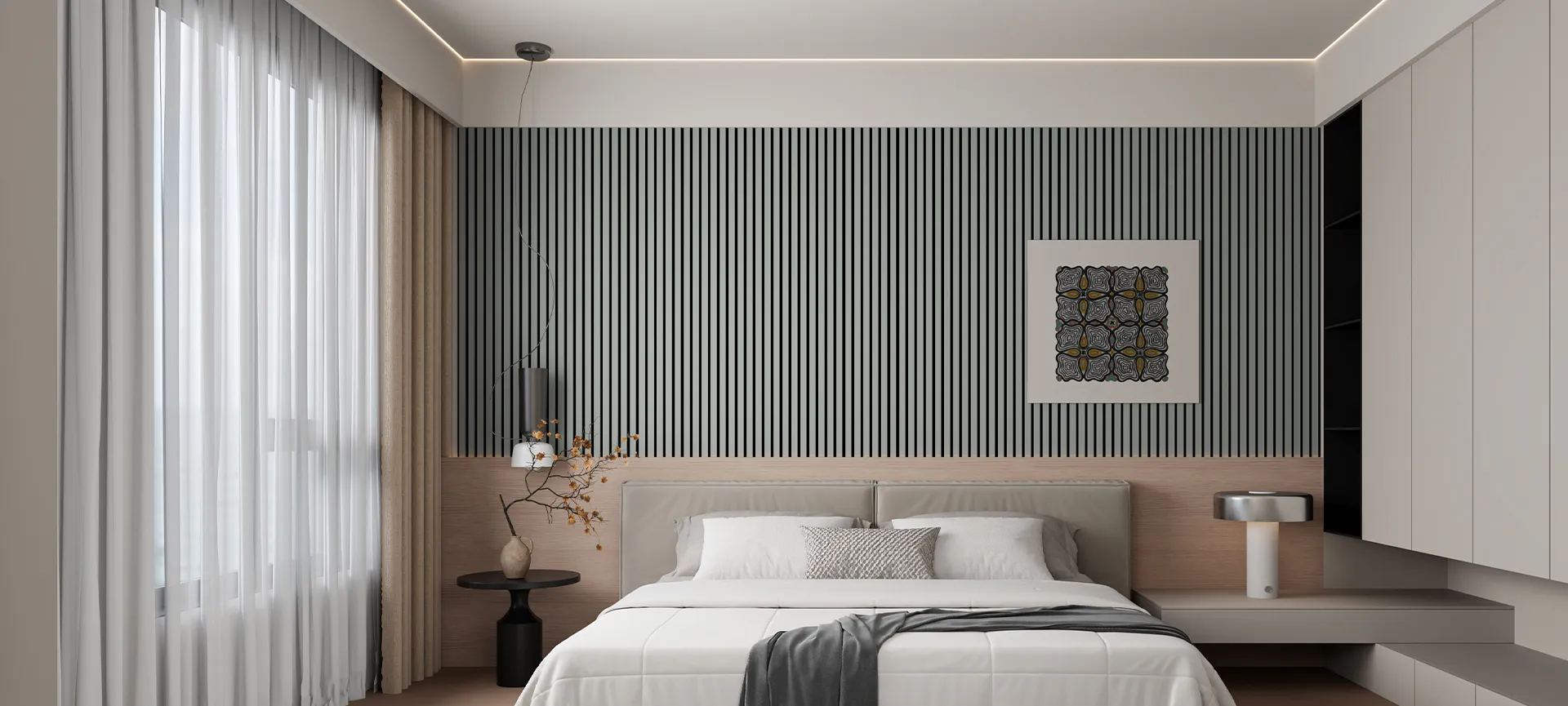Avoid your inquiry is delay response, please enter your WhatsApp/Skype along with the message, so we can contact you at the very first time.
We will reply you within 24 hours. If for urgent case, please add WhatsApp/WeChat: +86-13678899682 directly.
Feeling trapped under noisy neighbors? Footsteps, chairs, and music travel down like rain. The soundproof fix depends on the acoustic panel you choose and how your ceiling and floor are built. Let’s make an action plan for your upstairs neighbor problem—fast.
Acoustic panels calm echoes and airborne noise, but they don’t stop footstep thumps from above. For upstairs impact sounds, you need ceiling upgrades (decouple, add mass, insulation) plus soft finishes upstairs. Panels still help by lowering reverberation and overall noise level so your room feels quieter.
At Beien Construction Co., Ltd.—a professional manufacturer in China of high-quality PET and wood acoustic panels—we build acoustic solutions for distributors and importers, architects and interior designers, contractors on large commercial and public builds, and brand owners who need OEM/ODM. Below, we’ll show exactly when acoustic panels work, what they can and cannot do for noise from upstairs neighbors, and how our engineering-led packages deliver measurable results for B2B projects worldwide.
People say soundproof when they want “make noise go away.” In building science, we separate two kinds of sound coming from the upstairs floor:
Traditional wall or ceiling acoustic panel systems are designed to absorb sound that’s already in your room. That means they help reduce reverberations and echoes within a room, making voices clear and masking small airborne intrusions. But panels do not block sound created upstairs. For that, you need soundproofing measures that change the way the building transmits vibration: decouple, add mass, and seal gaps.
“Treat the right path: absorb the room, isolate the structure.”
— Beien Acoustical Team
Yes—panels will help with the amount of sound you perceive, mainly by calming echo and reverberation so each intrusive sound feels less harsh. When a room is reflective, sound waves that enter bounce around. You hear every step longer, so the disturbance feels worse.
By adding acoustic panels on the ceiling and the side of the wall facing the noise, you help reduce smear from those intrusive sounds. You minimize sound build-up and deaden the sound within a space. The result: clearer audio, better speech privacy, and quieter living—even though the structural path from the upstairs neighbor’s floor still needs work.
Key idea: Acoustic panels work for airborne control and comfort. They do not stop impact noise traveling through joists. Combine panels with isolation for the best strategy.

acoustic panel ceiling
Impact and airborne sounds behave differently:
Because impact energy uses the structure, foam panels on your ceiling don’t catch it at the source. To reduce noise transfer, you either decouple the ceiling from joists, add mass (e.g., double layers of drywall + green glue damping), and/or build a drop ceiling on isolators with insulation inside. Then your room panels tidy the remaining airborne reflections.
If your room has hard finishes, we often see a 25–40% subjective noise reduction (comfort, clarity) after adding PET or wood slat panels. That’s because the panels absorb sound (one exact phrase ticked) reflections within a room. Voices get crisp; TV listening volume drops; small taps feel less sharp.
But for footstep thuds, you need the layered approach below. Think “two systems”:
Panels are step 2. They make a treated ceiling even better and raise overall noise control performance.
We install building-grade packages based on three soundproofing strategies:
Pro tip: Put batt insulation (fiberglass or mineral wool) in the cavity to drop cavity resonance. Then finish the visible surface with PET or wood panels from Beien for a durable, design-forward finish.
Here’s a simplified comparison you can share with clients in a condo, apartment complex, or office:
| Assembly (Below Upstairs Floor) | What it Targets | Typical Effect* | Difficulty |
| Painted ceiling only | None | Minimal | Low |
| 1× extra drywall | Airborne | +3–5 dB | Low |
| Resilient channel + drywall + insulation | Airborne and structure-borne | +8–12 dB | Medium |
| Isolation clips + double drywall + green glue + insulation | Impact noise & airborne noise | +12–18 dB | Medium-High |
| Isolated drop ceiling + mass + Beien PET finish | Impact + airborne + aesthetics | +15–20 dB | High |
*Effects are indicative; the materials used and workmanship matter.
Why Beien finishes on top? Our PET boards (NRC up to 0.85) and wood slat panels turn that high-mass ceiling into a premium interior while keeping the acoustical performance. They’re easy to install, clean, and project-friendly for GCs and millwork teams.

Ceiling assemblies that actually block sound
These don’t replace isolation, but they cut “how much you feel” the problem:
Even small steps reduce the disturbance while you plan the structural fix.
Site: mixed-use apartment complex corridor with loud upstairs neighbors (gym-style footsteps at peak hours).
Problem: Noise issues reported by tenants; echoes made it worse.
Package: Isolated grid, cavity insulation (mineral wool), double drywall + green glue, then Beien PET finish panels.
Result: Metered hallway sound transmission dropped ~14 dB A-weighted; tenants reported “peace and quiet” compared with before. Speech clarity improved because reflections were tamed.
“The hallway used to carry every step. Now, even when there’s much noise upstairs, it feels controlled.” — Facilities Manager
For upstairs footfalls, IIC rules. For voices and TV, STC matters. Many specs ask for stc and iic targets; smart design lifts both with isolation, mass, and damping, then finishes with PET or wood panels for visual and acoustical performance.
PET acoustic panels (our specialty) are light, tough, and available in 30+ colors. They’re soundproofing materials you can cut onsite, apply to ceilings and walls, and keep projects on schedule. Beien PET reaches NRC values up to 0.85, is recyclable, and ships quickly for roll-outs.
Wood acoustic panels bring warm texture with slats and backed felt. The slat profile and backing are designed to absorb sound in speech bands, so lobby and office spaces sound calm. In a condo lobby where image matters, wood slats with an isolated ceiling deliver both brand presence and comfort.
Tip: Foam or fiberglass? For interior finishes, A-grade PET and slat systems avoid itch and add durability. We still specify fiberglass batts behind isolated ceilings when a high STC/IIC goal needs it.

wood panels for noise control
As a factory, we support OEM/ODM and multi-site roll-outs:
We combine isolation packages with finish panels so your team gets one coordinated soundproofing and finish scope from a single partner.
This layered approach doesn’t promise noise completely gone in every case, but it’s the proven route to reduce airborne noise and footstep thumps to acceptable levels.
Perceived dB Improvement (Typical Ranges)
Isolation + Mass + Damping | ████████████ 15–20 dB
Channel + Insulation | ████████ 8–12 dB
Extra Drywall Only | ███ 3–5 dB
Panels (Room Only) | (comfort) 25–40% echo reduction
Remember: numbers vary with joist spacing, slab thickness, and workmanship.
Panels will help most when used with isolation; they then help reduce the amount of sound you feel from each event by controlling the room’s response.
When you spec assemblies, ask for tested data and the materials used. Look for complete systems rather than piecemeal add-ons. Ratings guide:
No single layer fixes all noise issues. Packages win.
For architects and interior designers, we provide Revit families, finish schedules, and cut sheets. For contractors, we ship pre-cut kits with labeling that lines up with your reflected ceiling plan. For distributors and importers, we stock the top sellers and reserve colorways for your market. For brand owners, we print private labels, custom cartons, and develop exclusive patterns.
Because we handle both soundproofing finish panels and coordination with isolation vendors, you get one accountable scope—less finger-pointing, more peace and quiet for occupants.
Can acoustic panels stop footsteps from upstairs?
Not by themselves. Panels within a room cut echo and tame airborne energy. Footsteps are impact noise and structure-borne. Use isolation (clips/channel), add mass, damping (green glue), and insulation—then finish with PET or wood panels.
Will a thicker carpet upstairs fix it?
A good carpet and pad—or a big rug—reduces sharp heel strikes and can help reduce irritation. But for durable control you still want a better IIC ceiling below.
Do I place panels on the ceiling or walls first?
Ceiling first. Then early-reflection side of the wall positions. In small rooms, 20–30% coverage often transforms comfort.
What results should I expect?
Every building is different. We routinely see double-digit dB cuts after isolation + mass + damping, and big comfort gains from paneling. That equals clearer sound, fewer complaints, and quieter living.
How do STC and IIC relate to my project?
STC targets airborne noise like voices, while IIC targets footstep impact noise. Many specs require both. Ask your GC for tested assemblies and proper sealing to reduce noise transfer.
Is PET safe and sustainable?
Our PET uses recycled content, offers stable color, and is cleanable. It’s durable for corridors, schools, and offices. We support OEM hues for brand consistency.
(General primers; your local codes and lab reports for assemblies will provide exact test values.)
As the manufacturer, we control quality, color, and scale. Our PET boards (NRC up to 0.85) and wood slat lines ship fast, install cleanly, and meet global specs. We package soundproofing strategies with finish panels, support OEM/ODM, and deliver to multi-country programs with consistent color and milling. If you’re dealing with noisy neighbors in a hospitality, education, healthcare, office, or residential rollout, we’ll design the package, kit it, and stand behind it.
Action: Tell us your ceiling type, joist/slab makeup, and target result. We’ll propose an isolation stack and a coordinated PET/wood finish set that your crew can install—and your tenants will thank you for.
Goal: Get from “thumps and echoes” to “contained and calm.”
| Layer | Purpose | Example Spec | Visual |
| Isolation | Breaks noise transfer | Clips + furring | Hidden |
| Mass | Blocks airborne noise | Double drywall | Hidden |
| Damping | Cuts “ring” in the mass | Green glue | Hidden |
| Cavity Fill | Kills resonance | Mineral wool insulation | Hidden |
| Finish | Controls sound within | Beien PET / wood slat | Visible |
No one layer fixes noise completely, but the right stack transforms comfort. Use isolation + mass + damping to stop energy at the ceiling plane, seal every edge, and finish with PET/wood to control the room. That’s how you turn noise sources above into acceptable background—and get back to work, sleep, and peace and quiet.